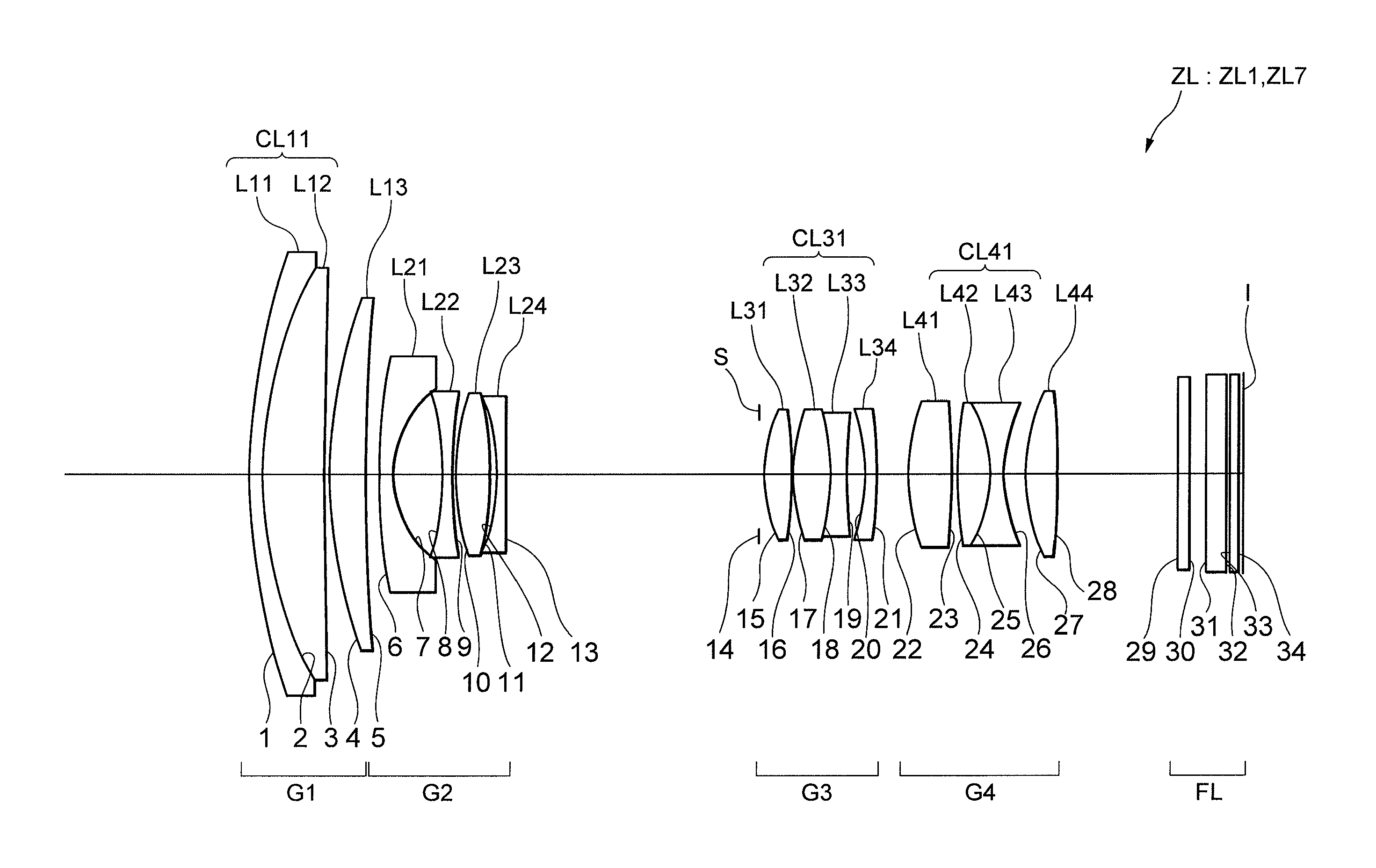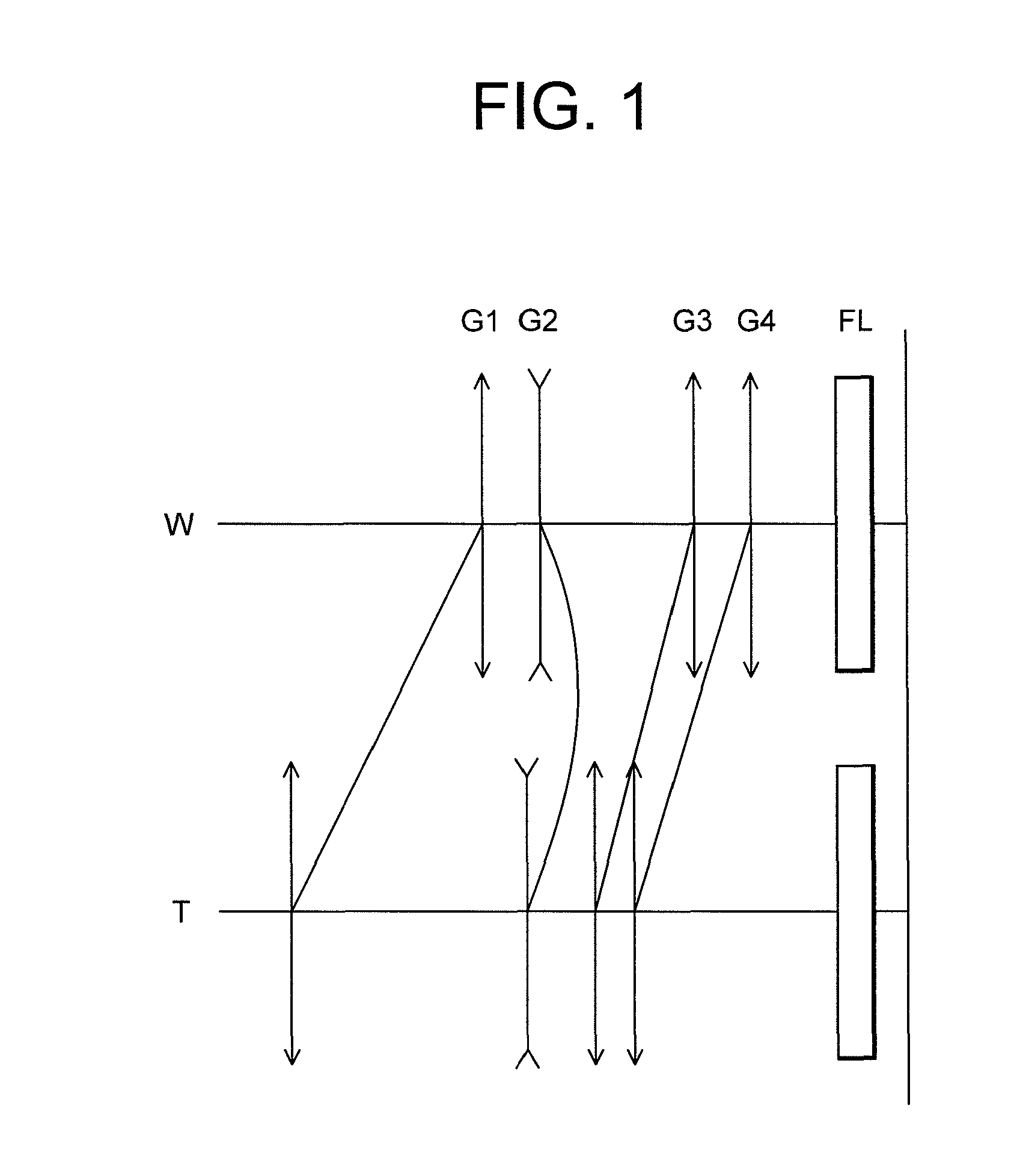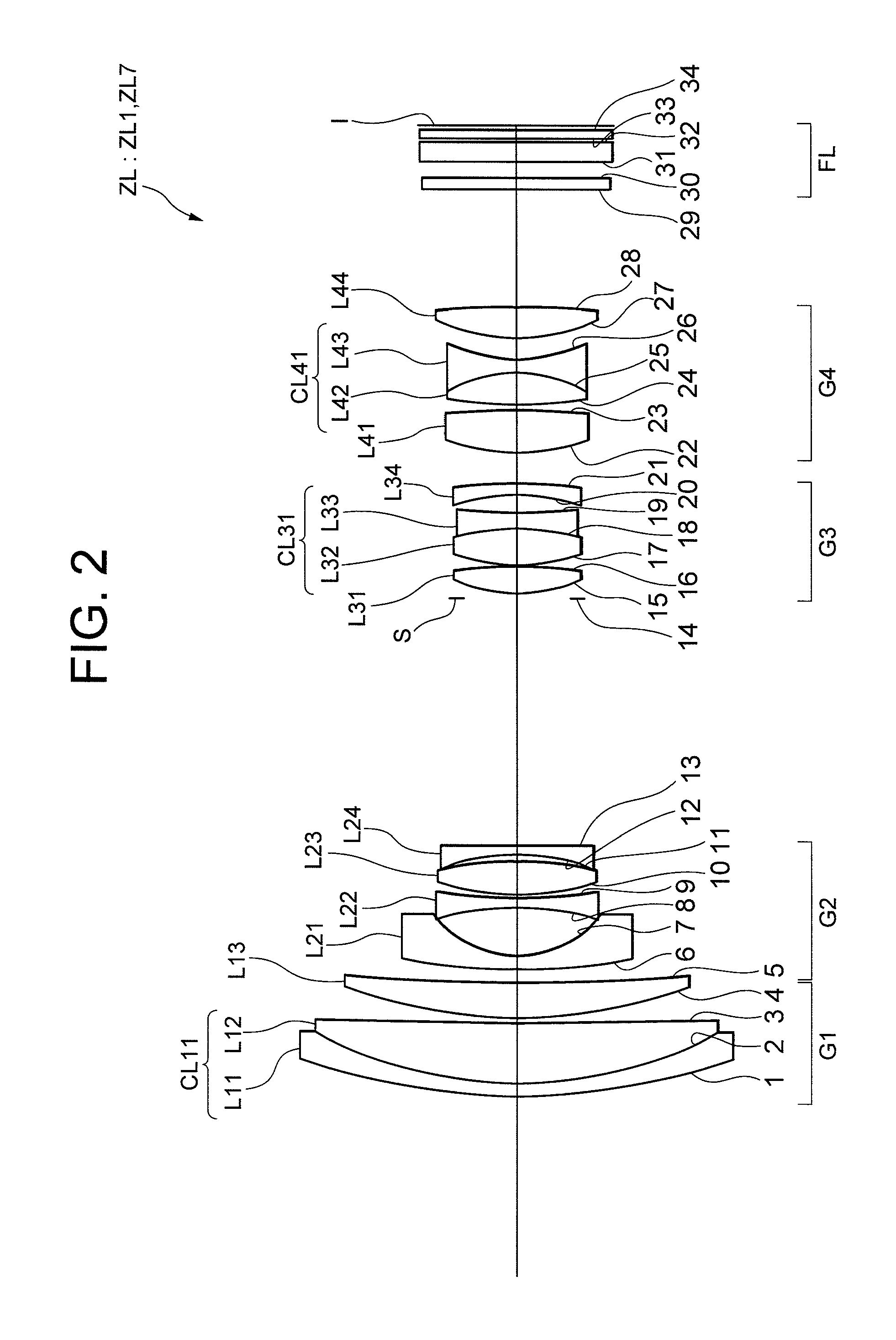Zoom lens, optical apparatus equipped therewith, and method for manufacturing zoom lens
a technology of zoom lens and optical apparatus, applied in the field of zoom lens, can solve the problems of insufficient optical performance of conventional optical system, large size, and poor portability, and achieve the effect of reducing the body size and high optical performan
- Summary
- Abstract
- Description
- Claims
- Application Information
AI Technical Summary
Benefits of technology
Problems solved by technology
Method used
Image
Examples
first embodiment
[0057]A first embodiment of the present application will be explained below with reference to accompanying drawings. As shown in FIG. 1, a zoom lens ZL is composed of, in order from an object side, a first lens group G1 having positive refractive power, a second lens group G2 having negative refractive power, a third lens group G3 having positive refractive power, and a fourth lens group G4 having positive refractive power. In the zoom lens ZL, upon zooming from a wide-angle end state, which gives the shortest focal length, to a telephoto end state, which gives the longest focal length, at least the first lens group G1 and the fourth lens group G4 are moved to the object side such that a distance between the first lens group G1 and the second lens group G2 increases, a distance between the second lens group G2 and the third lens group G3 decreases, and a distance between the third lens group G3 and the fourth lens group G4 decreases. With this configuration, the zoom lens ZL makes i...
example 1
[0083]FIG. 2 is a sectional view showing a lens configuration of a zoom lens ZL1 according to Example 1 of the first embodiment. In the zoom lens ZL1 shown in FIG. 2, the first lens group G1 is composed of, in order from the object side, a cemented positive lens CL11 constructed by a negative meniscus lens L11 having a convex surface facing the object side cemented with a positive meniscus lens L12 having a concave surface facing the image side, and a positive meniscus lens L13 having a convex surface facing the object side. The second lens group G2 is composed of, in order from the object side, a negative meniscus lens L21 having a convex surface facing the object side and an aspherical surface formed on the image side, a double concave lens L22, a double convex lens L23, and a negative meniscus lens L24 having a concave surface facing the object side. The third lens group G3 is composed of, in order from the object side, a double convex lens L31, a cemented negative lens CL31 cons...
example 2
[0089]FIG. 4 is a sectional view showing a lens configuration of a zoom lens ZL2 according to Example 2 of the first embodiment. In the zoom lens ZL2 according to Example 2 of the first embodiment, the first lens group G1 is composed of, in order from the object side, a cemented positive lens CL11 constructed by a negative meniscus lens L11 having a convex surface facing the object side cemented with a positive meniscus lens L12 having a concave surface facing the image side, and a positive meniscus lens L13 having a convex surface facing the object side. The second lens group G2 is composed of, in order from the object side, a negative meniscus lens L21 having a convex surface facing the object side and an aspherical surface formed on the image side, a double concave lens L22, a double convex lens L23, and a double concave lens L24. The third lens group G3 is composed of, in order from the object side, a double convex lens L31, a cemented negative lens CL31 constructed by a double ...
PUM
 Login to View More
Login to View More Abstract
Description
Claims
Application Information
 Login to View More
Login to View More - R&D
- Intellectual Property
- Life Sciences
- Materials
- Tech Scout
- Unparalleled Data Quality
- Higher Quality Content
- 60% Fewer Hallucinations
Browse by: Latest US Patents, China's latest patents, Technical Efficacy Thesaurus, Application Domain, Technology Topic, Popular Technical Reports.
© 2025 PatSnap. All rights reserved.Legal|Privacy policy|Modern Slavery Act Transparency Statement|Sitemap|About US| Contact US: help@patsnap.com



